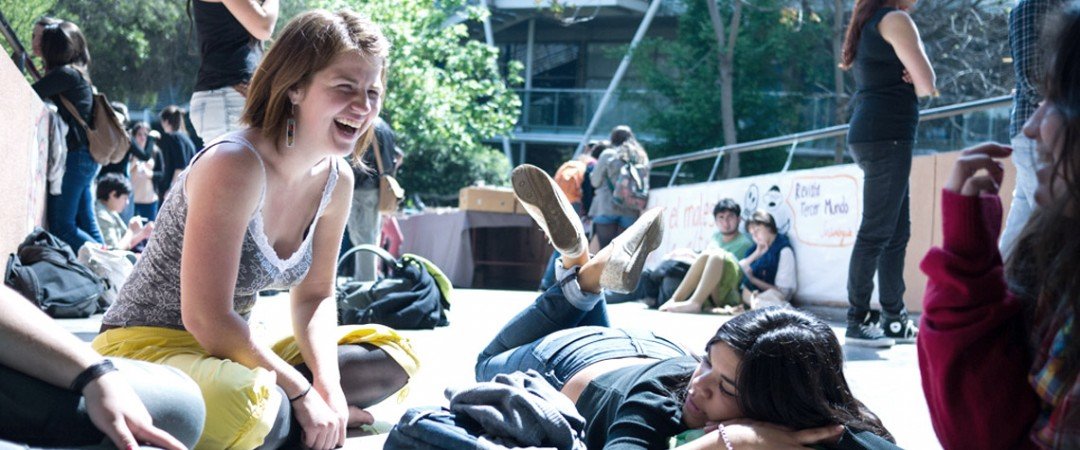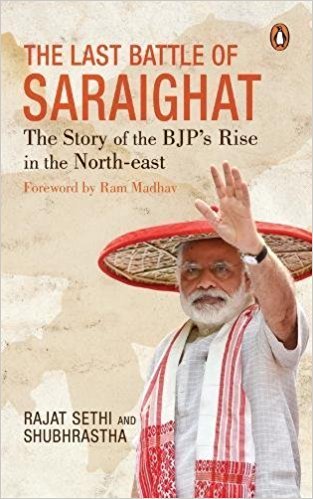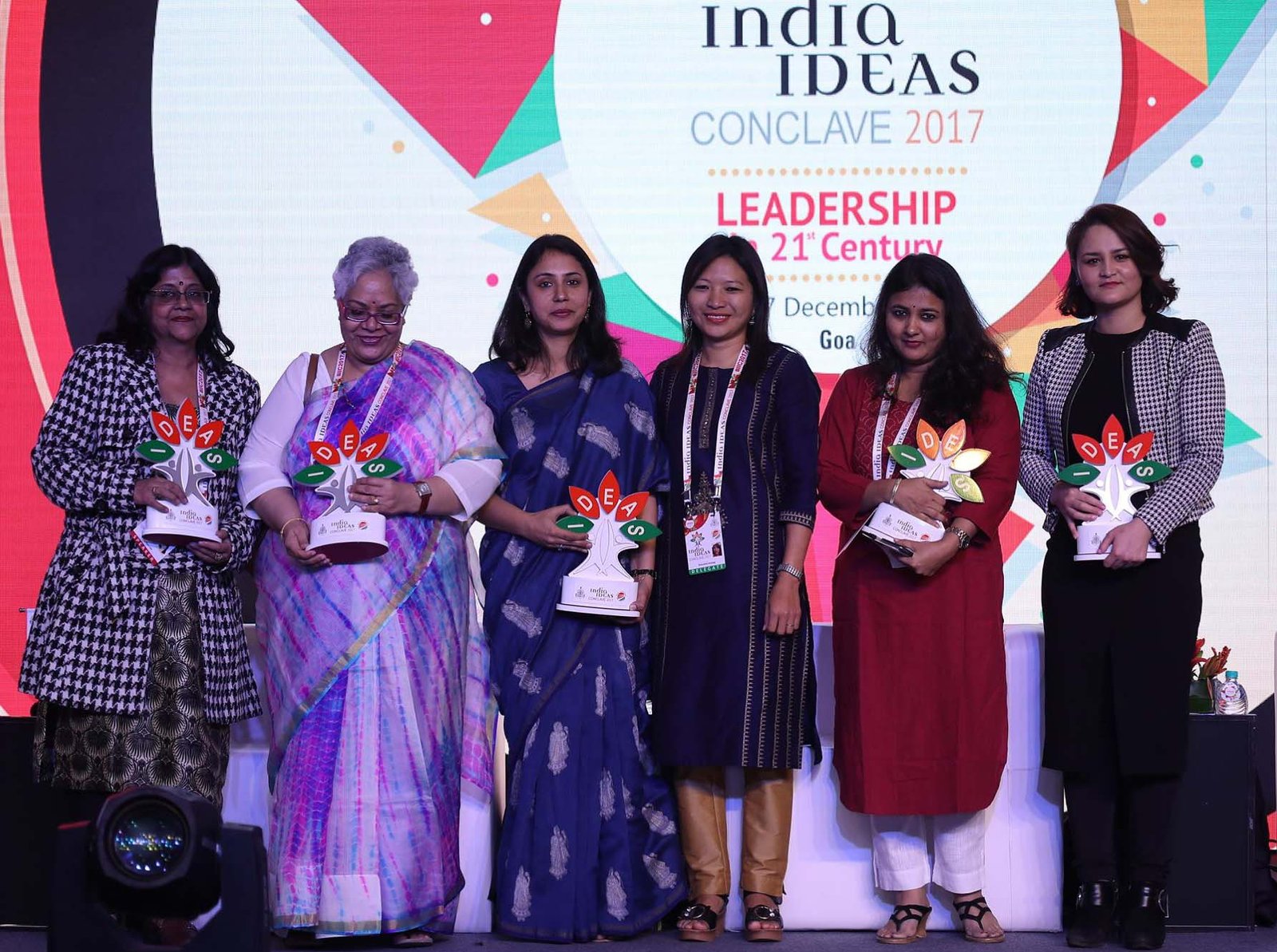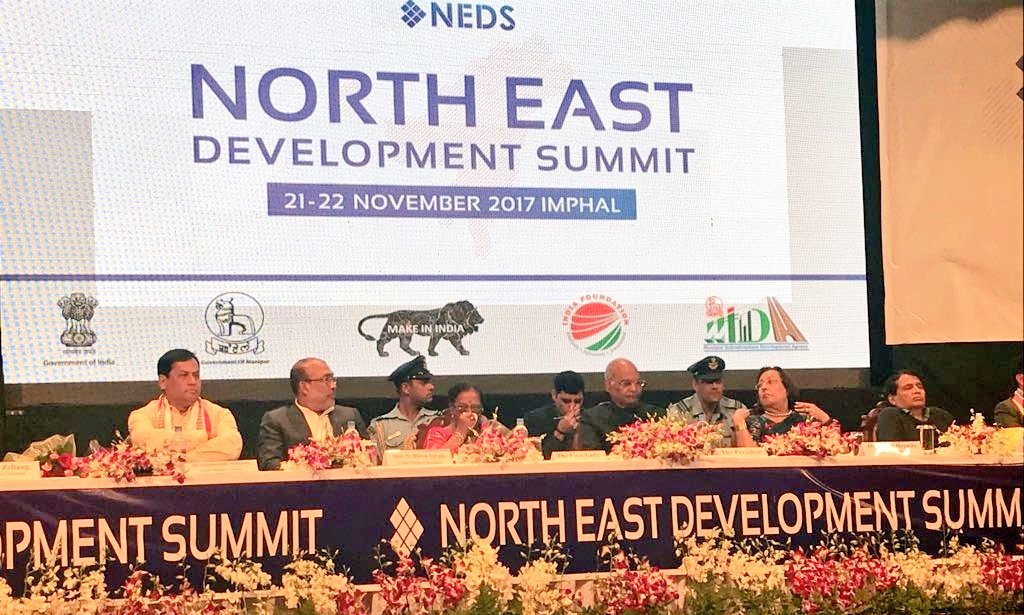Men are mortal. So are ideas. An idea needs propagation as much as a plant needs watering.” Dr. B.R. Ambedkar’s words signify the importance of a persistent set of efforts necessary for permeating an idea within each and every strand of society. India Ideas Conclave, an annual platform in its fourth edition this year, is one such effort made by India Foundation to take forward the churning of ideas for the peace, progress and prosperity of the world in the 21st century. The theme of the India Ideas Conclave 2017 – Leadership in 21st century, was aimed at generating meaningful discussions around this subject of crucial importance in the global arena. A brief report of the proceedings of the three-day Conclave is here below.
Day 1 – December 15, 2017
- Inaugural Session
- Mr. M.J. Akbar
Minister of State for External Affairs, Government of India, Mr. M.J. Akbar, in his Welcome Address remarked, “In order to understand what is leadership in the 21st century, one needs to first understand what the 21st century is.” Mr. Akbar emphasised through the examples of Battle of Waterloo (1815) and Mahatma Gandhi’s “Satyagraha” for India’s freedom during the late 1910s and early 1920s, that these kinds of events define the inception of a century rather than merely the turn of the century in numerical terms.
He attributed the birth of 21st century to two events, i.e. 9/11 (New York twin tower attacks) and 26/11 (Mumbai terror attacks). Mr. Akbar stated that terrorism has become an existential challenge to the very concept of a nation state and further added that nationalism is the ideological response to terrorism.
Reiterating the underlying philosophy of ‘Sabka Saath Sabka Vikaas’ Mr. Akbar said, “21st century is going to be the century where we search for prosperity. Not for few, but prosperity for all.”
- Mr. Zakir Anwar Nusseibeh
Minister of State, United Arab Emirates (UAE), Mr. Zakir Anwar Nusseibeh stated, “Those who do not remember their past are doomed to repeat it.” He further stated that lack of efficient political leaders creates the space for failed states and proxy wars. He added that by ensuring effective governance and administration, promoting investment and delivering smart and timely public services, UAE has become a pioneer in the Arab world for governance. Mr. Nusseibeh asserted that a leader must be aware of the consequences of failure and hence must be prepared to deftly face a highly uncertain set of challenges in the 21st century.
- Smt. Chandrika Kumaratunga
Former President of Sri Lanka, Smt. Chandrika Kumaratunga stated, “Today’s leaders in the 21st century will have to work together to strengthen the mechanism of regional and global governance. This is an absolute must.” She said that conflicts are bound to happen in the process of evolution and hence, continuous exchange of ideas is an imperative in order to promote understanding and developing consensus. She cautioned about the critical issue of climate change and asserted, “Solutions to the threat of climate change will have to begin from within nations but will have to be managed and handled at a global level.”
Advising the future leaders to be audacious in their decision making, she said that the problems of today cannot be solved by age-old solutions of the past and hence, the leaders must believe in themselves and not fear to be different.
- Mr. Manohar Parrikar
Delivering the concluding address at the Inaugural session, Goa Chief Minister,
Mr. Manohar Parrikar stated, “Lack of information or distorted information creates political chaos,” and added that “The real biggest challenge for 21st century leader is to ensure that this message goes in a focused manner to the citizenry.” He highlighted the need to develop acumen to undertake quick decision-making in such times of information asymmetry as an imperative to become a great leader in the 21st century.
- Ms. Mehbooba Mufti
in conversation with Mr. S. Prasannarajan
Jammu and Kashmir Chief Minister, Ms. Mehbooba Mufti asserted, “Idea of India is not separate from the idea of Kashmir.” She said that there is immense hope for finding a solution for Jammu and Kashmir if the leadership can go beyond the use of force, especially against its own people. Ms. Mufti went on to iterate that her party PDP formed an alliance with the BJP in the interests of the state of Jammu & Kashmir. She highlighted the need to increase the engagement of the entire country with Jammu and Kashmir and further added that by making the state a part of the broader SAARC vision of the country, Jammu and Kashmir can become India’s gateway to the Central Asia. Ms. Mufti emphasized that the concept of Kashmiriyat refers to the love for humanity and asked the members of media fraternity to help bring forth this aspect to the people across the country and the world.
- Panel Discussion I
Effective Nationalist Discourse
The panellists were – Mr. Zafar Sareshwala, Chancellor, Maulana Azad National Urdu University; Mr. Kanchan Gupta, Commissioning Editor & Commentator, ABP News; Mr. Anand Ranganathan, Associate Professor, JNU; Ms. Yogini Deshpande, Entrepreneur; and Mr. Vivek Agnihotri, Filmmaker. The session was moderated by Mr. Rajeev Srinivasan, Adjunct Faculty, IIM Bangalore.
Mr. Srinivasan began the discussion with bringing ‘Indic Exceptionalism’ into light and set the parameters for the discussion to include the meaning of nationalism, its role in the international arena and the nationalist narrative it subscribes to.
Mr. Sareshwala said that the idea of nationalism is devoid of any religious identity or sub-text. Culture and ethnicity help form better bonds than religion. For him, nationalism and patriotism are complimentary and one cannot exist without the other. Mr. Kanchan Gupta did not agree and stated that for him, the concept of nationalism is different from that of patriotism. He referred to patriotism as a ‘reduced idea’ to the geographical reality of a nation state. He asserted, “Civilisational identity is the national identity.”
Mr. Ranganathan stated that he considered nationalism as anti-science or anti-evolution and added that whereas human evolution respects diversity, nationalism on the other hand, restricts such diversity. Ms. Deshpande also acknowledged the difference between patriotism and nationalism and stated that the former is restricted to territorial bounds. Very significantly, she went on to challenge the token value of the oft-used adage ‘Vasudhaiva Kutumbakam’ by stating that the real essence of the entirety of the Hitopadesha shloka from where this adage is derived is that one should be careful to decide whom to invite to one’s home. Mr. Agnihotri called for a balanced approach in understanding the concepts of globalism and nationalism.
Day 2 – December 16, 2017
- Breakfast Session I
Mainstream Media
The panellists were – Ms. Aarti Tikoo, Senior Assistant Editor, the Times of India; Mr. Abhijit Majumdar, Managing Editor, Mail Today; Mr. Prashant Jha, Associate Editor, Hindustan Times and Ms. Liz Mathew, Associate Editor, Indian Express. Prof. Madhav Das Nalapat, Editorial Director, The Sunday Guardian was the moderator for this session. Important issues were raised about how media is being used for one-sided narratives due to which media is seen in a bad light and is losing credibility in the society. When questioned if ‘Media is power or it exists to empower’, the panel answered that media exists to check people in power and that it is not just confined to politics. The role of media is that of being a mediator and a facilitator. Ms. Tikoo highlighted that social media has in fact pushed back the mainstream media to correct its course, but mainstream media is effective in the matrix of current situation. Important concerns raised during the session included – whether mainstream media should be restricted to geographical hotspots; the need for media to refrain from blowing up incidents to disproportionate sizes and for maintaining a standard of ethics in its functioning. It was also generally agreed that nature of media should not be right or left to the centre, but it should concentrate on the right or wrong aspect of any particular incident or event.
- Special Address by Sri M
Addressing the gathering on the subject – Bhagwad Gita and leadership in 21st century, Founder of Satsang Foundation, Sri M (born Mumtaz Ali Khan) stated, “Shrimad Bhagwad Gita is the scripture of mankind.” The Bhagwad Gita was narrated in the battle field with the dissatisfaction of Arjun as its backdrop, which, according to Sri M, makes it not just a form of literature for a particular era but is meant for eternity. He stated that Bhagwad Gita teaches that ‘nishkaam karma’ is an important aspect of leadership and further added, “A leader should be in control of his emotions and be level-headed in all circumstances”.
Sri M said Gita narrates the attributes of the greatest yogi (leader) as one who can think for others as well as ensure self-growth. Referring to teachings of Swami Vivekananda, he stated that, “By considering underprivileged as ‘daridra-narayan’, service to them not only makes one a leader but also paves the path for one’s salvation.” Sri M iterated that in his view, Swami Vivekananda founded the concept of ‘vedantic socialism’, a basis of Indian leadership, which considers all souls to be equal.
- Presentations I
- Mr. Grandhi Mallikarjuna Rao
Chairman, GMR Group, Mr. Grandhi Mallikarjuna Rao stated that earlier, the nature of the world order was closed, but with rising effects of globalisation and economic interdependence, citizens across nationalities acquired a form of a global citizenship. Mr. Rao stated, “An ethical leadership with strong governance is the need of leadership in the 21st century.” He emphasised that the modern world is an extremely volatile one and efforts must be made to develop leaders who can impart ‘timeless leadership’.
- Ms. Naheed Farid
Member of Parliament from Herat province in Afghanistan, Ms. Naheed Farid commenced her presentation with Rumi’s words – ‘Raise your words, not voice’. She drew civilisational similarities between India and Afghanistan and referred to the need of eliminating the artificial boundaries which divide our societies. The purpose of the Conclave, according to her, is to conclude what to make of humanity. In her view, a leader must undertake several tasks namely – reverse poverty, diffuse terrorism, achieve sustainable lifestyle, prevent the use of weapons of mass destruction and plan for advancing the human civilisation. She asserted that terrorism and violence cannot dictate the choices of a leader and leaders should take full responsibility for their actions.
- Mr. Swapan Dasgupta
Member of Parliament, Rajya Sabha, Mr. Swapan Dasgupta said that times are changing and the ideas from yesterday have become the reality of today. He talked about the need for expanding our horizons and incorporating our national identity with the concept of global citizenship thereby making it more nuanced in nature. While advocating embracing change, he also cautioned, “There is a difference between having a critical view of the past and a dismissive view of the past.” He stated that the need of the hour is to be balanced and not become overwhelmed with modernity. The notion of ‘common decency’ or common values needs to be upheld at all times.
- Mr. Rajiv B. Lall
Founder Managing Director and CEO, IDFC Bank, Mr. Rajiv Lall stated that a strong leadership is a must to make a political case for a market-based economy. He talked about the need for a leader to catalyse social change when tensions exist between modernisation and conservatism. He observed, “There is a fierce contestation in our times to find new identities.” He said, “The new India needs statesman who can build generations.” In conclusion, he stated that a leader must revisit the idea of national identity and forge a new identity for a new India.
- Panel Discussion II
Intellectual Leadership
The panellists were – Mr. Minhaz Merchant, Journalist & Author; Prof. Makarand Paranjape, Professor, JNU; Mr. Badri Narayan, Director, G.B. Pant Social Science Institute; and Mr. Amish Tripathi, Author. Mr. Rahul Pandita was the moderator. Mr. Pandita stated, “There is no civilisation that is not rooted in culture.” Mr. Merchant spoke about the need for laying down the essentials of what comprises of national interest for a country. According to him, social inclusiveness, governance and geo-politics are the important parameters for delivering intellectual leadership.
Prof. Paranjape attributed the main cause of Indian backwardness on its lack of thought and the incapacity to think. Stating that India is blessed with ‘Avataric leadership’ since centuries, he went on to emphasise his point by giving the illustration of free-thinking leadership imparted by Lord Buddha. Thus, the Indic leadership is shifting of consciousness and not imposing of a one, single idea. He asserted that change must occur at all levels in the society to revive intellectualism.
Mr. Narayan acknowledged that every community needs intellectuals to make their identities visible in the society. These intellectuals do not merely deliver education but impart wisdom. He spoke about the need for leadership in 21st Century to speak in a language that can instantly connect and directly interact with the thoughts of people like Kabir.
Mr. Amish Tripathi stated, “Despite the system trying to do everything to make us forget, we refuse to forget.” He asserted that the source of India’s wealth in the past was its colossal intellectual leadership. He highlighted the need to reform Indian education system to reflect its true intellectuality and the need to reconnect with the roots of our culture for the same.
The panel agreed that rationality alone cannot save the dying knowledge creation and the ancient wisdom is important. It is important to adopt a bottom-up approach to build a genuine intellectual ecosystem in the country. The panel concurred on the fact that the academic leadership in the 21st century needs to become more outcome oriented. The challenge is to make this ecosystem conducive where formal and informal learning can thrive in harmony in the society.
- Presentations II
- Mr. Haseeb Drabu
Jammu and Kashmir Finance Minister, Mr. Haseeb Drabu’s presentation focused on the subject – ‘Relationship between the civil society and state of J&K and the interventions made by the state as a matter of policy.’ He asserted that the situation in J&K has become better as the role of civil society has increased since 2015 and the engagement has not been confined to any one segment but with people of India as a whole.
He stressed that the long-term experiment set in motion with the alliance of the BJP and the PDP in J&K is an example of displaying the traits of a sound leadership by both sides. Explaining the kind of national identity he envisages for the country, Mr. Drabu stated, “I would rather see a national identity as a matrix of regional identities.” He went on to add that this can happen not merely through the Indian state, but through holistic participation by the Indian civil society. He said, “I think the real challenge of leadership in Kashmir and also in rest of the country is not about leadership in terms of political or economic leadership, but the core issue would be social leadership in the country.”
- Mr. Baijayant Jay Panda
Member of Parliament from the state of Odisha in Lok Sabha, Mr. Baijayant Jay Panda stated that the most important challenge for a leader is to take democracy to the last mile. Describing democracy as a work-in-progress, Mr. Panda identified important attributes of leadership in 21st century as – branding, organising and possessing charisma. Talking about the importance of being a charismatic leader, he stated, “If you want to bring about seminal changes in your field, charisma is an important attribute for a leader to possess.”
Mr. Panda spoke about the two trends visible in Indian polity in today’s times namely – cynicism vs optimism; and the argumentative Indian vs the decisive Indian. Explaining the difference between a cynical and an optimist leader, he remarked, “Cynical leadership looks at the past, (whereas) optimistic leadership looks at the future.” He also highlighted that the gradual shift of our polity from an argumentative one to a decisive one is an achievement in itself which must be attributed to leadership of the country.
- Mr. Jayant Sinha
Focusing on the virtues of economic leadership, Minister of State for Civil Aviation, Government of India, Mr. Jayant Sinha confidently stated that India can become an economic leader if it can become a global hub for innovative and entrepreneurial businesses. Talking about the need to develop a long-term vision for becoming the economic growth-engine of the world, he said, “We must aim to not merely build a unicorn (1 billion) or a super unicorn (10 billion) but target at building a mega unicorn (100 billion market cap companies).”
Mr. Sinha stated, “When we solve India’s problems, we solve the world’s problems.” He spoke about how focusing on getting our own processes right through an indigenous ‘Indian’ style of functioning can help develop prototypes which can then be emulated in developing countries across the globe. Mr. Sinha remarked, “If we want to seize the leadership in the 21st century, we need to become the entrepreneurial engine of the remaining 6 billion people of the world.” He identified financial technology, electric vehicles and drone technology as the three possible sectors that can make India an economic leader in the 21st century.
- Special Address by
Vice President of India
Vice President of India, Mr. M. Venkaiah Naidu presented the India Foundation-Swarajya Awards 2017. Dr B R Shenoy Award was presented to Mr. Niranjan Rajadhyaksha.
Dr Shyam Prasad Mukherjee Award was presented to Mr. Himanta Biswa Sarma. Sree Narayana Guru Award was presented to Ms Lakshmi Narayan Tripathi. Ustad Bismillah Khan Awardwas presented toMr. Sirivennela Seetharama Sastry.
In his special address Mr. Naidu stated, “The time has now come for us to build a New India, which shall again take its rightful place in the comity of nations.” Speaking about the nature of Indian culture, he stated, “If you have a roti (a form of bread), you eat that roti, it is prakruti (nature). If you don’t have a roti, you take other’s roti and eat, that is vikruti (regression). If you have a roti and there is someone starving and you give them the roti that is sanskruti (values of culture). This is Bharatiya Sanskriti (Indian cultural values).”
Speaking about the importance of a functional and accountable Parliament, Shri Naidu said, “The effective functioning of Parliament and Legislatures is extremely important for strengthening the foundations of democracy in the country.” Talking about the significance of Vedas from ancient Indian history, he said,” Answers for many problems facing the world can be found in the Vedas, which provide us with guidance needed to achieve moral, economic, social and political development.”
- Panel Discussion III
Business Leadership
The panellists were – Ms. Shamika Ravi, Member, PM’s Economic Advisory Council; Mr. Ashish Chauhan, MD & CEO, Bombay Stock Exchange; Mr. Nilesh Shah, MD Kotak Mahindra Mutual Fund and Mr. Niranjan Rajadhyaksha, Executive Editor, Mint. Mr. Saket Misra was the moderator for this session. Ms. Ravi stated that growth must not merely be considered as a ‘macro concept’. She emphasised on the need for having focus on developing human capital to address the ‘culture of growth’ for business leadership in the country. Mr. Chauhan emphasised on the need for creating an ‘entrepreneurial culture’ to manage the wealth that will be created in the future in our economy. He stated, “Leadership has to concentrate not only on developing trade and commerce but also on the creation of trust.” Mr. Rajadhyaksha stated that in order to develop strong leadership, there is an imperative need to create a conducive environment to foster innovation and to implement a sound legal framework in the country. He stated, “We cannot think of India as a market economy unless we think of India as an effective state.” Ms. Ravi also spoke about the need for inculcating financial discipline in order to enable growth. The panel collectively agreed that it is important to bring economic and financial discourse into the mainstream within the country.
- Panel Discussion IV
Editors Panel
The panellists were – Mr. Raj Chengappa, Group Editorial Director (Publishing), India Today Group; Ms. Milee Aishwarya, Editor-in-Chief, Penguin India; Mr. R Jagannathan, Editorial Director, Swarajya and Mr. Prabhu Chawla, Editorial Director, The New Indian Express and The Sunday Standard. Mr. Balbir Punj, former Member of Parliament was the moderator. Mr. Punj said that an effective leadership must be well-equipped in order to resolve civilisational issues. Mr. Chengappa stressed on the need to deal with fundamentals and reform leadership across all the stratas of the society.
Ms. Aishwarya highlighted that a leader must possess the ability to mobilise the people for a cause or an idea. She also mentioned that the writings of 21st century should be able to reflect what is happening in the society. For Mr. Jagannathan, the attributes of a leader would depend on the issues that need to be resolved. He cautioned saying, “Everything that was taken for granted in the 20th century has been challenged in the 21st century and so old ideas cannot be adhered to.” He stated that there is a need for ‘post-ideology leaders’ in the country, and that 29 such state leaders have to deliver, to make a case for strong Indian leadership.
Mr. Chawla expressed his concerns on the changing discourse on leadership that only speaks an economic language and not the language of the whole country. He stated, “Leaders have to be not only cautious of the political terrors but also of the market terrors to ensure equality.” He asserted that the focus should be on creation of ‘ethical Indian’ developmental solutions for our nation’s problems. The panel agreed that leadership in the 21st century needs to deliver on the key parameters of ‘Vikaas’ with a focus on micro-level development in the country.
- Presentations III
- Mr. P.V. Rajgopal
President of Ekta Parishad, Mr. P. V. Rajgopal stated, “Leadership needs to be initiated from the bottom where the people are capacitated to solve their own problems.” He remarked that unjust systems produce violence and conflict and therefore it is important to engage with the youth in the 21st century. He also emphasised that means are as important as ends and hence, ethics become important in the discourse of development. He said, “Indian leadership should be an ‘enlightened leadership’ based on renouncement and sacrifice.”
- Mr. C.R. Mukunda
Akhil Bharatiya Saha-Baudhik Pramukh of the Rashtriya Swayamsevak Sangh (RSS), Mr. C.R. Mukunda stressed on the need for developing ‘cultural leadership’ in the 21st century. He talked about how good values inculcated from within the family can be spread across the world order. He stated, “Leadership will emerge from the society which will be a product of values and dynamism from within the community.” He stressed on the fact that a leader is known by the decision he takes and therefore, it is important for a leader to stay balanced and not get influenced by extreme thoughts. He further stated, “There should be a balance between values-based idealism and needs- based pragmatism.”
- Mr. Syed Salman Chisty
Gaddi Nashin- Dargah Ajmer Sharif and Chairman – Chishty Foundation, Mr. Syed Salman Chisty emphasised on the subject of the spiritual responsibility of a leader. He said, “There is enough discourse on the physical aspect of the responsibilities of a leader but there is a dearth of literature on a leader’s spiritual responsibility.” He said, “Living entity is not a mere resource. It is an instrument of healing created by the divine.” To the leaders of 21st century, Mr. Chisty gave the message that India has always had a rich past of spiritual legacy and imparting service to humankind which they must always keep in mind.
Describing the qualities of a good leader, he stated, “A leader must have earth like hospitality, river like prosperity and sun like bounty. A leader should serve the (nature’s) creation to serve the nature.” Emphasising on the actions to be undertaken by a leader, he iterated that a leader must approach his work as a form of meditation, be honest towards his actions and overcome selfishness to impart world-class leadership in the 21st century.
Day3 – December 17, 2017
- Breakfast Session II – Social Media
The panellists were – Mr. Amit Paranjape, Co-Founder, PuneTech; Ms. Smita Barooah, writer; Ms. Shefali Vaidya, columnist, Swarajya; and Mr. Amit Malviya, In-charge, National IT Cell, BJP. Mr. Vijay Chada, Owner, VIANA Consultants, was the moderator.
Talking about the need to build credibility on social media, Mr. Paranjape said, “Like any other media platform, for social media too, one needs to build credibility and then sustain the same.” Speaking about how social-media has led to altering the status-quo in the world of communication, Ms. Barooah remarked, “Social media has led to the breakdown of the ‘Raja-Praja’ model. Instead of vertical communication, horizontal communication is happening which is altering the entire dynamics.” She went on to add, “One needs to be mindful that on social media, one must ‘respond’ and not ‘react’.”
On being asked the change that has been brought in the discourse by social media, Mr. Malviya said, “Social media has democratized the discourse.” He further stated, ”I believe social media shall continue to remain as chaotic as it is today and that is the beauty of it.”
- Presentations IV
- Mr. Himanta Biswa Sarma
Finance Minister of Assam, Mr. Himanta Biswa Sarma stated that the problems faced by the world today have a reflection of their past. He said, “India needs an ‘organic leadership’ and not a ‘dynastic’ leadership.” He attributed leadership in 21st century to attributes such as respect for culture, education, family values, principles of ahimsa and universal tolerance.
He stated, “The problems of India can be answered through Indic solutions which are found in the Indian heritage.” He referred to Swami Vivekananda and said, “The purpose is not to go back to the past but to develop a scientific and healthy understanding of our philosophy and tradition so that our future generations can benefit.” Talking about the impact of positive leadership, he said that the change in leadership in the state of Assam has had a positive impact not restricted only to the state of Assam, but has created a ripple effect across entire North-eastern India.
- Mr. Prasoon Joshi
in conversation with Mr. Vikram Sampath
Referring to a leader as a Guru, Chairperson, Central Board of Film Certification and noted lyricist and poet, Mr. Prasoon Joshi said, “A true Guru is the one who frees you of himself.” Speaking about Indian leadership, he said, “It is important to institutionalise the culture and the collective sub-conscious to make a strong case for Indian leadership.”
Taking cue from the teachings of Bhagawad Gita, Mr. Joshi said, “The world out there is not predictable. Have you prepared leaders who can instinctively take decisions in such a world using his ‘vivek’ (wisdom) by being ‘sthitapragya’ (one with equilibrium of mind in all situations)?”
Describing the kind of creativity he believes in, Mr. Joshi said, “Expression and responsibility go hand in hand. I subscribe to that kind of creativity.” But he also cautioned that in the era of ‘snacking entertainment’, one must know the subject well before commenting or else it becomes a disservice to the society. On the question of whether there should be a boundary on creative expression, Mr. Joshi provided with an affirmative answer. The society of India is complex and therefore it becomes necessary to be responsible within the defined structure. One should be creative, but also respect the society. One should not kill and progress. Degrading a human form cannot be entertained. He categorically stated, “Depiction is acceptable, not derogation.”
- Panel Discussion V
Global Leadership
The panellists were – Ms. Veena Sikri and Mr. Basant Kumar Gupta, both former diplomats. Mr. Shakti Sinha, Director, Nehru Memorial Museum and Library was the moderator. Mr. Sinha brought many aspects before the panel such as – multi-polarity in 21st Century, Chinese hegemony, Indic thought of governance, academic power in the realm of international relations, etc. He said, “India is solidly democratic. Both contestation and participation are an integral part of democracy of the country.”
Ms. Sikri emphasised on the need for ‘thought-based leadership’ in 21st Century. She remarked, “Misuse of power is dictatorship. Leadership is the wise use of power.” She said that only when there is a clear national vision of ‘brand India’, will the global leadership come organically. She stated, “The Indian soft power is the strategic asset of the Indian foreign policy.”
Mr. Gupta claimed spirituality to be India’s biggest power. He believed that thoughts from texts such as the Bhagawad Gita must be learnt to reform the Indian leadership. Giving an example he remarked, “Leadership in Sanskrit means ‘Netrutva’ which originates from the word ‘Niti’.” He further added, “There is a need to ensure that the Indian ethics and values are taught to today’s demography in order to enjoy its dividend while providing for a global leadership.”
- Panel Discussion VI
Women Leadership
The panellists were – Ms. Lalitha Kumaramangalam, former Chairperson, National Commission for Women; Ms. Nistula Hebbar, Journalist, the Hindu; Ms. Sandhya Jain, Editor, Vijayvaani; and Ms. Setara Hassan, CEO, Zan TV, Afghanistan. Ms. Smriti Kak, journalist, the Hindustan Times was the moderator. Ms. Kumaramangalam iterated that the women can be said to have gained leadership only when they can become contributing decision-makers in the society. She said, “It is not about men vs. women, but about giving women a chance to portray their skills.”
Ms. Jain focused on the momentum of women empowerment in the 21st Century. South Asia has a dynamic heritage which has witnessed women leaders much before the other countries in the world. She said, “Women in power are making subtle differences with significant impact but not being adequately noticed.” She also highlighted the need to recognise women in the fields of science and technology, sports, combat services etc.
Ms. Hebbar noted that entry is not difficult for women in today’s times, but climbing up the ladder is relatively tough. She stated, “Women should be recognised for their proportion in the population and not because they are better or deserve sympathy.” She made a case for ‘targeted intervention’ for the case of women leadership in the society.
Ms. Hassan also spoke about the under-representation of women in the top managerial positions both in the East and the West. She highlighted the fact that the notion that women must have masculine characters to be a good leader should change. She said, “Domestic work does not disqualify her from being strategic thinkers.” The panel concurred that leadership is not about forced modernisation, but when women shall get freedom to make a choice in every aspect of their lives.
- Valedictory Session
The valedictory session was graced by Shri Khilraj Regmi, former Prime Minister & Chief Justice of Nepal and Smt. Mridula Sinha, Governor of Goa.
- Mr. Khilraj Regmi
Talking about leadership in politics, Shri Regmi stated, “When we are talking about politics and philosophy, we cannot forget our ancient philosophers.” He spoke about the need for instilling morality and self-discipline in leaders of the 21st century. Talking about the kind of challenges that shall be faced by leaders in the 21st century he stated, “21st Century leadership cannot escape from the complexities of the societal boundaries.” He asserted that the modern society shall march towards peace and prosperity only when we can eliminate poverty and inequality from the world.
- Smt. Mridula Sinha
Smt. Mridula Sinha stated, “Leadership is an ability or capacity to do something through talent (natural ability) and skill (proficiency).” Describing the qualities of a good leader, she said that a leader must have the qualities of self-awareness, sense of direction, vision, motivation, social awareness, innovation, respect for history, ability to dream for a future and must foster creativity in the 21st century. She affirmed the need to imbibe Indian values in truest sense in order to become a global leader in the 21st century. She said, “In order to become a world leader, one must not only embrace technological changes, but also thoughts, values and culture of Indian origin which talk about human service as the supreme service to the mankind.” She said, “Leadership is needed to solve the problems – closing the gap between the way things exist and the way they ought to be.”
(This report is carried in the print edition of January-February 2018 issue of India Foundation Journal.)









